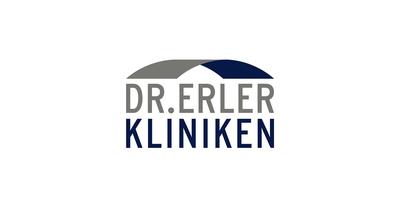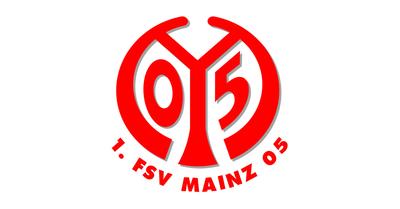At Jena University Hospital, Paessler PRTG ensures uninterrupted patient care
About Jena University Hospital
The Jena University Hospital (Universitätsklinikum Jena; UKJ) can look back on a history of more than 200 years and is the only university clinic of its kind in Thuringia, Germany. With over 5,600 employees in health care, research and teaching, the UKJ is the largest employer in the region.
Every year, more than 300,000 inpatients and outpatients are treated at the 26 clinical centers and polyclinics. 2,400 medical and dental students study medical science here; scientists at 25 institutes from more than 25 nations are researching the further development of medicine.
Almost 17 million surgeries are performed on inpatients in hospitals in Germany every year (according to the GBE Bund). During many operations, the surgeon monitors what is happening in real time on a screen while he guides the instruments – until suddenly the image disappears in the middle of the operation. The necessary supply of information has been cut off for a moment.
In some situations, this can even be a matter of life and death for patients. In order not to let such an event take place and to ensure the smooth functioning of all necessary systems, Jena University Hospital has decided to have its IT infrastructure as well as its medical devices monitored in the future. The monitoring software PRTG Network Monitor came into question as a possible solution.
“With these sensors, we have have a close view on the current device status of, for example, MRTs, CTs, ultrasound devices and video endoscopes. We monitor the most unstable link in a chain of DICOM routers. As soon as PRTG raises the alarm, we know that we have to intervene.”
Stefan Theisel, IT employee at the Jena University Hospital
Ensuring unrestricted patient care
The fail-safe operation of IT systems and the medical infrastructure has become essential to ensure smooth patient care in hospitals. Important patient files and data from examinations are stored digitally and can therefore be called up at any time by the treating physicians.
Numerous systems work together for this; on the one hand there are imaging devices, image data storage, information systems and central communication servers. On the other hand, there is the classic IT infrastructure with switches, servers, databases and storage systems. If one of these important systems fails – whether it's through hacker attacks, hardware defects or a software error – this could paralyze the entire operation of the hospital in an emergency.
Since this would have dramatic consequences on a larger group of people, hospitals with more than 30,000 inpatient cases per year have been classified as critical infrastructures (KRITIS) since mid-2017 and fall under the provisions of the IT Security Act. According to this, hospital operators are obliged to adequately secure IT systems, personal data and processes through so-called TOMs (technical and organizational measures) and thus to ensure their availability.
For this reason, those responsible at the Jena University Hospital decided to monitor the hardware and software environments in their distributed facilities with a central network monitoring tool in order to be informed about possible failures at an early stage.
Various products were tried out, each with specific deployment characteristics. The university hospital was looking for a product that could be used in as many ways as possible in combination with simple installation and maintenance. Good adaptability and the ability to monitor without agents were among the requirements.
In addition, the tool should offer functions for multi-user management and a simple allocation of authorization. “We were looking for a solution that exactly met our requirements,” says Karsten Wölffer, IT employee at Jena University Hospital. The decision was ultimately made to use PRTG.
12,000 sensors monitor hybrid and distributed infrastructure
To keep an eye on all relevant IT components, 12,000 sensors are used, including ping, SNMP, WMI, XML and HPE Server Health sensors. Each of these can monitor one or more parameters of an infrastructure component. The university hospital uses the sensors to monitor, for example, servers, switches and routers, storage devices, VoIP telephones, LAN, websites and VMware.
The sensors transmit information in real time on the status of the systems, devices and applications to the monitoring software server. There, all collected data is clearly displayed on the PRTG web interface. In order to make day-to-day work more efficient, the IT staff at the university hospital adapted the dashboard to their individual work processes and tasks right from the start. The IT department uses the dashboard maps in PRTG to provide non-IT staff with specific content.
Since patients of the Jena University Hospital are treated at 26 clinics at several sites, all monitoring data must be collected and evaluated at a central location. For this, and to relieve their core server, the IT managers use three remote probes. These enable the distributed components to be monitored with a PRTG instance or with a single license.
If a component fails, the IT manager immediately receives a warning message including real-time data via email, SMS or push message. So he does not first have to search for which system is affected in which part of the building and can react quickly.
“In this way, we can prevent applications from failing due to full memory or a full database,” says Karsten Wölffer. “Our goal is to create a continuous end-to-end monitoring system that gives us a comprehensive overview.” In the long run, resources (disk space, CPU, RAM) can be scarce and can be expanded based on PRTG charts only when needed.
The monitoring tool has also been able to help with problems with external service providers. “We quickly debunked claims from our software service providers that our storage and server infrastructure was too slow,” says Karsten Wölffer.
DICOM and HL7 sensors secure medical communication
The medical technology data protocols DICOM and HL7 play a decisive role in how hospitals communicate. The monitoring tool's DICOM and HL7 sensors are therefore an important factor for the hospital. The DICOM sensors make it possible to monitor imaging systems and the transmission of image data within the medical infrastructure.
“With these sensors, we have a close view of the current device status of, for example, MRTs, CTs, ultrasound devices and video endoscopes. We monitor the most unstable link in a chain of DICOM routers. As soon as PRTG raises the alarm, we know that we have to intervene,” says Stefan Theisel, IT employee at the Jena University Hospital.
HL7 is the common protocol for the transmission of patient-related data. With HL7 support, PRTG can include systems such as HIS, RIS or LIMS in the monitoring, ensure data transmission and monitor the devices involved. The tool does not read out any personal data, but only information about the amount and routes of the data or the condition of the devices.
Conclusion
With the help of the PRTG monitoring tool, clinics can prevent failures of applications that are relevant for the maintenance of the respective hospital operations. With the support of the medical data protocols DICOM and HL7, the tool not only includes the IT components, but the entire medical infrastructure in the central monitoring. In this way, unlimited patient care can be ensured and resources can be saved in the long term.
Get to know more happy PRTG customers
Customer success story DR. ERLER KLINIKEN & PRTG
DR. ERLER KLINIKEN uses Paessler PRTG to monitor IT and medical infrastructure 24/7, prevent downtime, and ensure reliable patient care through proactive diagnosis. ➤ Read the customer success story!
Customer success story Dätwyler & PRTG
Swiss IT and OT infrastructure solutions provider Dätwyler IT Infra relies on Paessler PRTG for monitoring in their customer projects. ➤ Read the complete customer success story now!
Customer success story 1. FSV Mainz05 & PRTG
The IT team of 1. FSV Mainz05 monitors its IT and the entire stadium technology with PRTG so that everything runs penalty free. ➤ Read the complete customer success story now!


